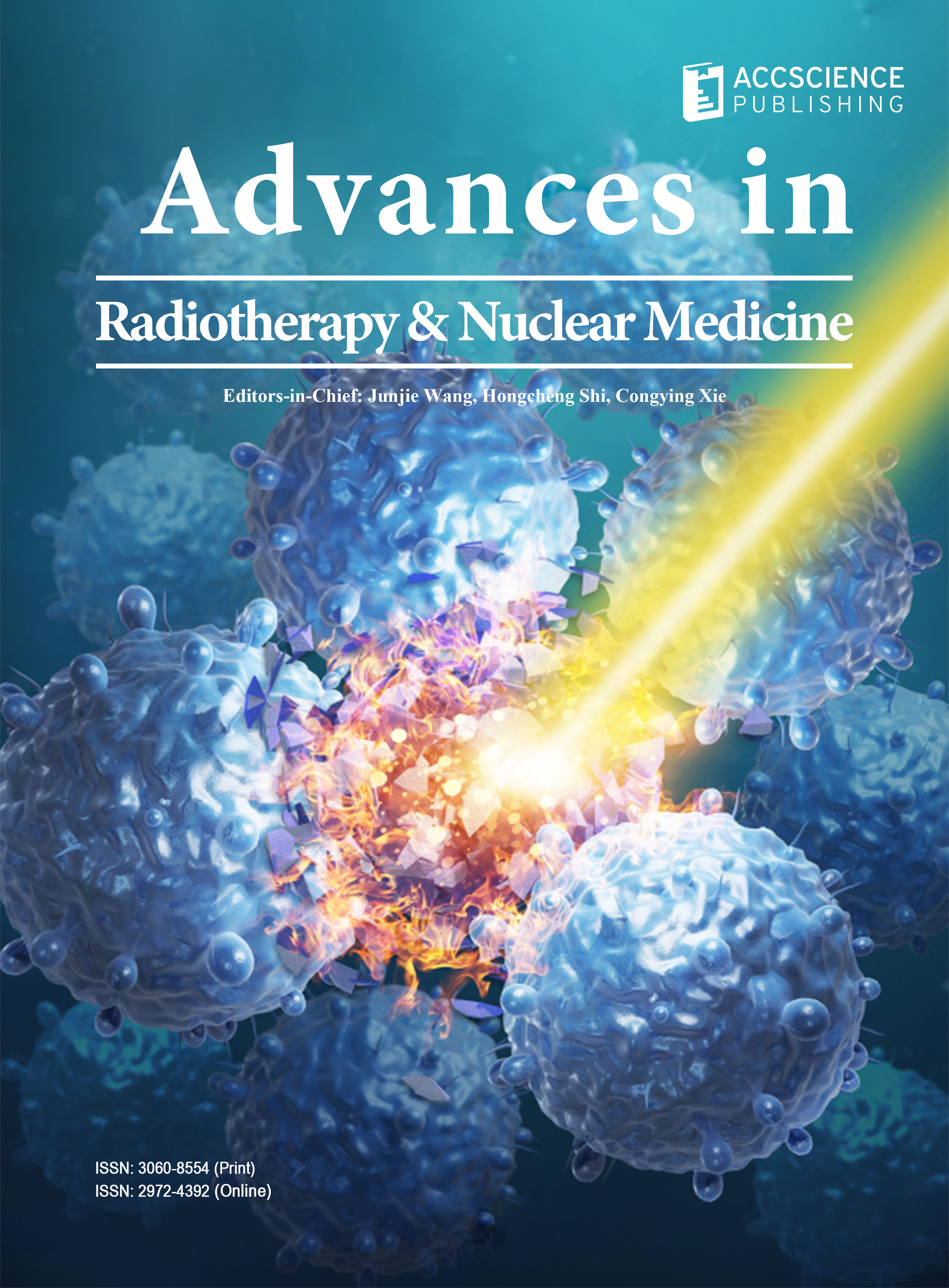Cross-sectional imaging in symmetrical bilateral extranodal recurrence of follicular lymphoma: A case report

Follicular lymphoma (FL) constitutes nearly 30% of all lymphomas, making it the second most prevalent B-cell lymphoma. It exhibits an indolent course within the spectrum of non-Hodgkin lymphoma, with variable 5-year progression-free survival rates. Histologically graded 1–3, FL primarily affects bone marrow and lymphoid organs but may also involve extranodal tissues, such as bilateral muscle tissue. This report outlines the diagnostic challenges associated with disease recurrence in such unusual locations, emphasizing the need for vigilance among clinicians and radiologists. Through imaging and biopsy, we confirmed recurrence in the patient. The study highlights the role of 18F-FDG PET/CT in detecting uncommon FL sites and guiding treatment decisions while emphasizing the importance of multidisciplinary care for optimal patient management.
- Freedman A. Follicular lymphoma: 2018 update on diagnosis and management. Am. J. Hematol. 2018;93(2):296-305. doi: 10.1002/ajh.24937
- Swerdlow SH, Campo E, Pileri SA, et al. The 2016 revision of the world health organization classification of lymphoid neoplasms. Blood. 2016;127(20):2375-2390. doi: 10.1182/blood-2016-01-643569
- Sutamtewagul G, Link BK. Novel treatment approaches and future perspectives in follicular lymphoma. Ther Adv Hematol. 2019;10:204062071882051. doi: 10.1177/2040620718820510
- Kaseb H, Ali MA, Koshy NV. Follicular lymphoma. In: StatPearls. Treasure Island, FL: StatPearls Publishing; 2024.
- Alamdari A, Naderi N, Peiman S, Shahi F. Non-Hodgkin lymphoma with primary involvement of skeletal muscle. Int J Hematol Oncol Stem Cell Res. 2014;8:55-57.
- Glass AG, Karnell LH, Menck HR. The national cancer data base report on non-Hodgkin’s lymphoma. Cancer. 1997;80(12):2311-2320.
- Cheson BD, Fisher RI, Barrington SF, et al. Recommendations for initial evaluation, staging, and response assessment of hodgkin and non-hodgkin lymphoma: The lugano classification. J Clin Oncol. 2014;32(27):3059-3068. doi: 10.1200/JCO.2013.54.8800
- Surov A. Imaging findings of skeletal muscle lymphoma. Clin Imaging. 2014;38(5):594-598. doi: 10.1016/j.clinimag.2014.03.006
- Gao S, Shu H, Yang H. Imaging features of skeletal muscle lymphoma: A case report and literature review. BMC Med Imaging. 2021;21(1):136. doi: 10.1186/s12880-021-00667-4
- Kostakoglu L, Goldsmith SJ. Fluorine-18 fluorodeoxyglucose positron emission tomography in the staging and follow-up of lymphoma: Is it time to shift gears? Eur J Nucl Med. 2000;27(10):1564-1578. doi: 10.1007/s002590000340
- Paes FM, Kalkanis DG, Sideras PA, Serafini AN. FDG PET/ CT of extranodal involvement in non-hodgkin lymphoma and hodgkin disease. Radiographics 2010;30(1):269-291. doi: 10.1148/rg.301095088
- Fardin S, Gholami S, Werner TJ, Rook AH, Alavi A. Imaging evaluation of cutaneous lymphoma using functional and structural imaging. In: Imaging in Dermatology. Netherlands: Elsevier, 2016. p. 485-490. doi: 10.1016/B978-0-12-802838-4.00035-2
- Fueger BJ, Yeom K, Czernin J, Sayre JW, Phelps ME, Allen- Auerbach MS. Comparison of CT, PET, and PET/CT for staging of patients with indolent non-hodgkin’s lymphoma. Mol Imaging Biol. 2009;11(4):269-274. doi: 10.1007/s11307-009-0200-9
- Mandava A, Koppula V, Wortsman X, Catalano O, Alfageme F. The clinical value of imaging in primary cutaneous lymphomas: Role of high resolution ultrasound and PET-CT. Br J Radiol. 2019;92(1095):20180904. doi: 10.1259/bjr.20180904
- Alnouby A, Ibraheem Nasr IM, Ali I, Rezk M. F-18 FDG PET-CT versus contrast enhanced CT in detection of extra nodal involvement in patients with lymphoma. Indian J Nucl Med. 2018;33(3):183-189. doi: 10.4103/ijnm.IJNM_47_18
- Ferrer A, López-Guillermo A, Montoto S, Estrach T, Colomo L, Montserrat E. Successful treatment of isolated cutaneous relapse of follicular lymphoma with rituximab. Ann Hematol. 2001;80(8):479-481. doi: 10.1007/s002770100314
- Trotman J, Pettitt AR. Is it time for pet-guided therapy in follicular lymphoma? Blood 2022;139(11):1631-1641. doi: 10.1182/blood.2020008243
- Gallamini A, Zwarthoed C. Interim FDG-PET imaging in lymphoma. Semin Nucl Med. 2018;48(1):17-27. doi: 10.1053/j.semnuclmed.2017.09.002

